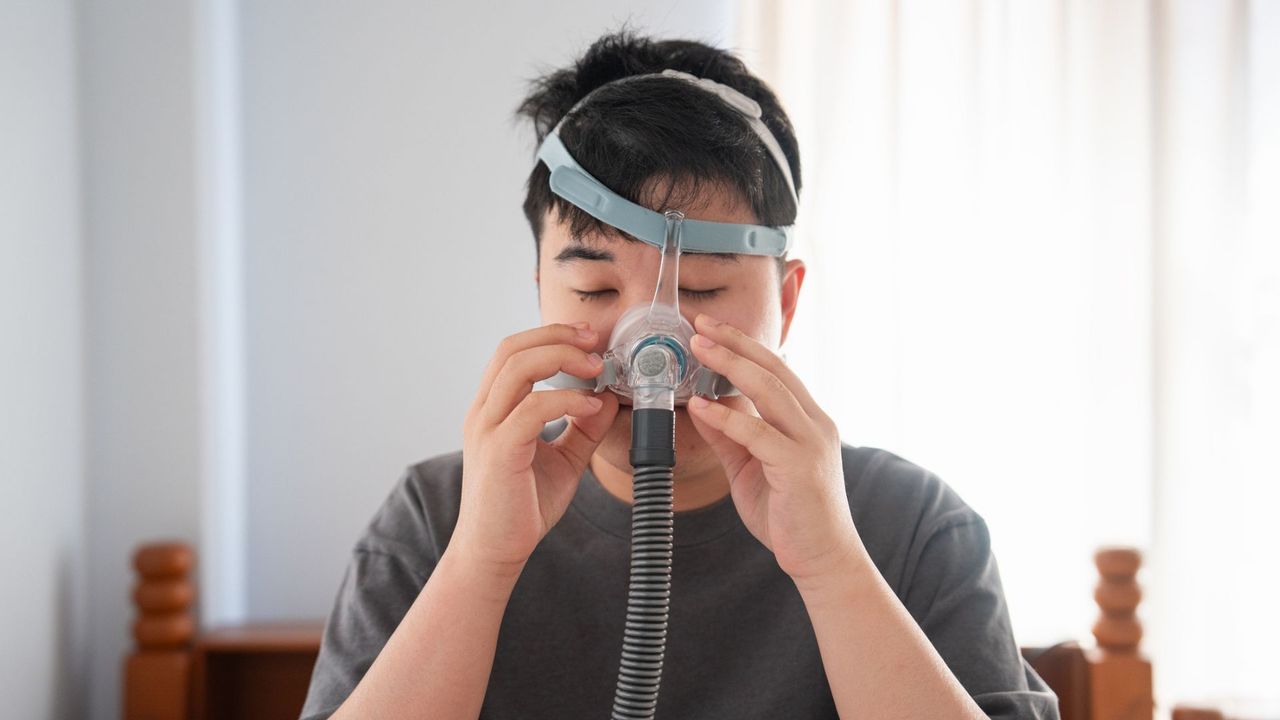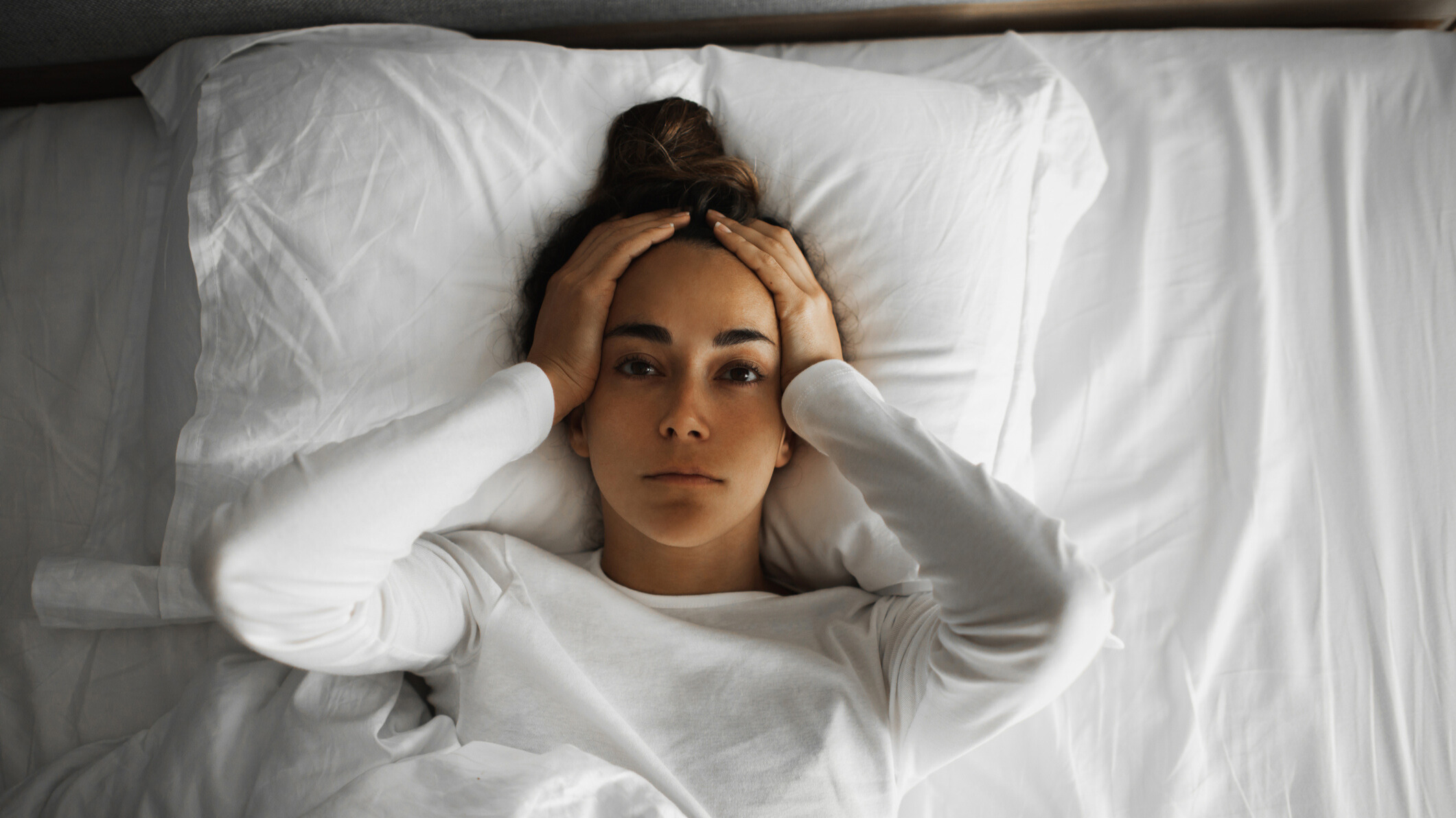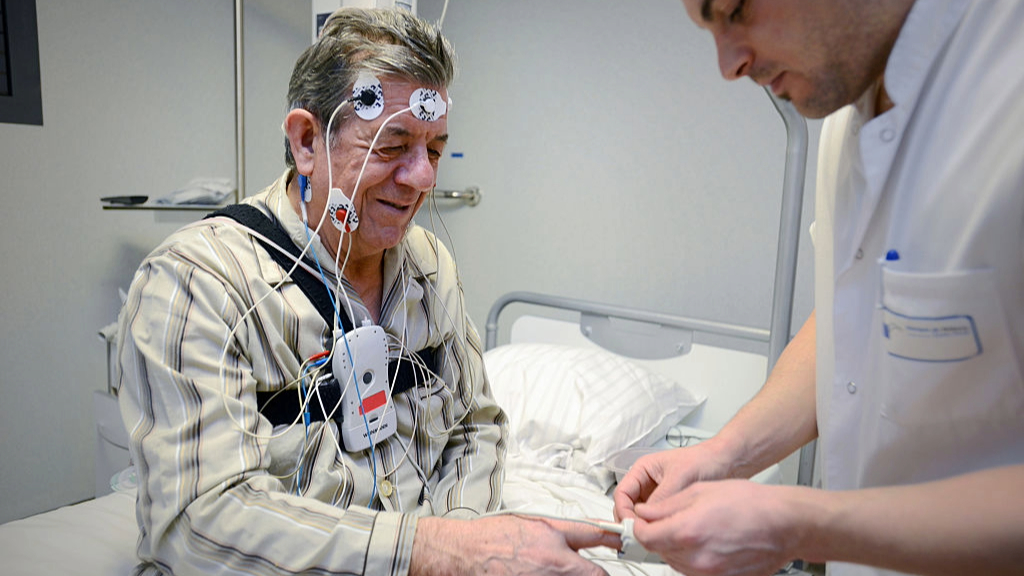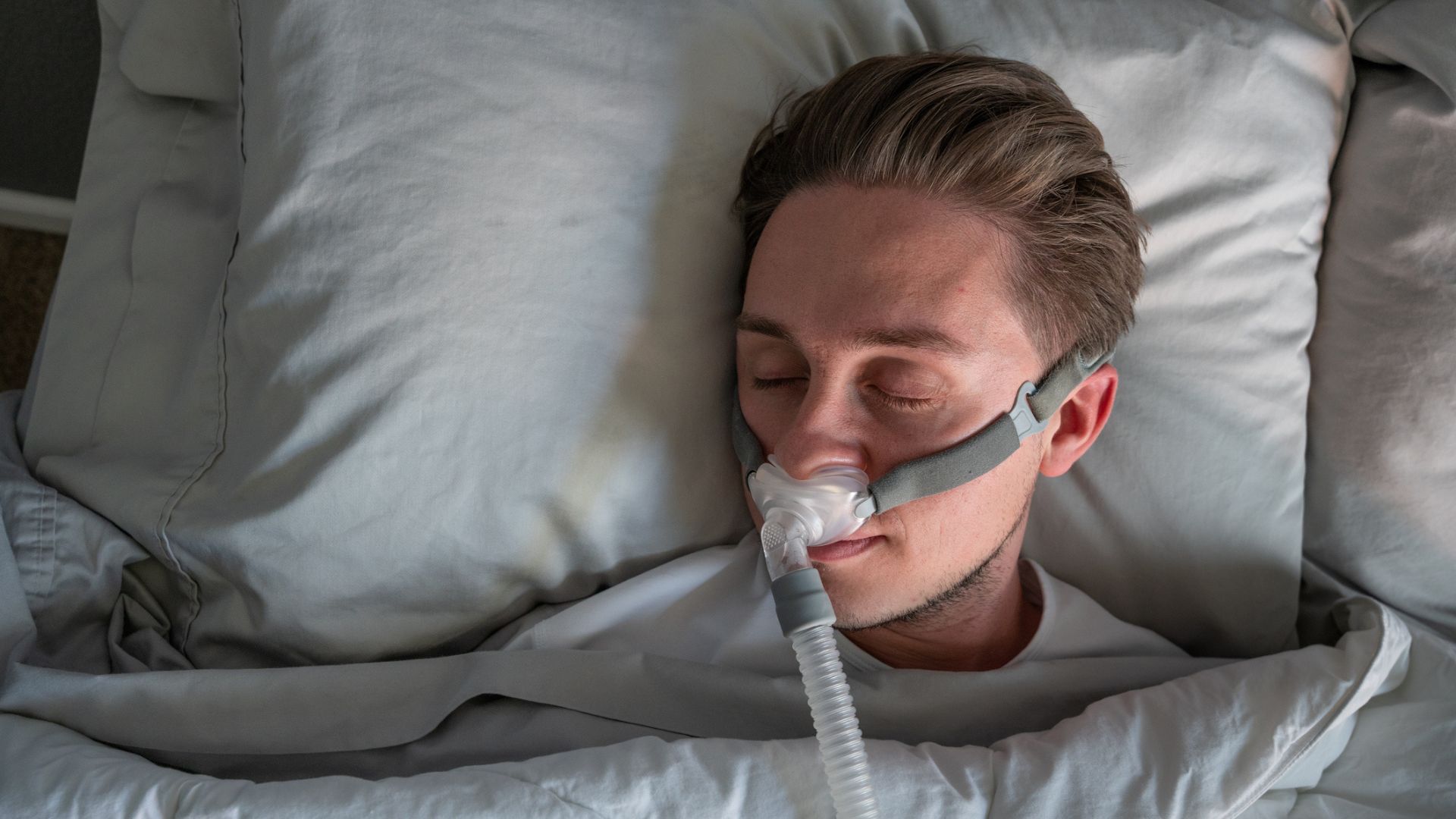
Central sleep apnea (CSA) is a sleep disorder that is less common than obstructive sleep apnea, but it does have some similarities.
In the US, CSA is estimated to affect less than 1% of adults over 40. It’s a sleep disorder that is caused by a brief lack of communication between your brain and the muscles that control your breathing.
CSA is also associated with underlying health conditions such as cardiovascular disease, stroke and primary brain disorders.
As with obstructive sleep apnea, it’s important to get a diagnosis if you suspect you might have the condition. Undiagnosed CSA can lead to impaired quality of life, and it can also affect your cardiovascular health.
We’ve spoken with a sleep scientist and a sleep medicine and pulmonary medicine specialist to find out more about this less common form of sleep apnea.
What is central sleep apnea?
“CSA is a sleep disorder in which the brain fails to signal the muscles of respiration, primarily the diaphragm, to make an effort to take a breath,” explains Dr Peter G Polos, a sleep medicine and pulmonary medicine specialist at JFK University Medical Center in New Jersey.
“This can stop breathing for a period during the night, and it then spontaneously resumes normal breathing until the next cycle," he adds.
"This can occur many times an hour during sleep.”

Risk factors associated with CSA
Central sleep apnea can affect people of all ages, but it’s more common in older adults, and those with certain health conditions. Some lifestyle factors can also increase your risk of developing CSA.
The most common risk factors include:
- Being male – men are more likely to be diagnosed with CSA than women
- Increasing age
- Heart conditions such as heart failure
- Stroke or primary brain disorders
- Opioid use
- Exposure to/sleeping at high altitudes
Dr Carleara Weiss, a sleep scientist and sleep science advisor at Aeroflow Sleep, explains that the main risk factor involves having an underlying medical condition, as this can impact the brain’s ability to regulate breathing signals to the respiratory muscles.
“These conditions include cardiovascular diseases," she explains.
This can include "stroke and congestive heart failure, chronic use of narcotic medication or substance abuse that suppresses the central nervous system, and neuromuscular diseases such as Parkinson’s disease, myasthenia gravis (a chronic autoimmune condition), and amyotrophic lateral sclerosis (ALS).”
But that's not an exhaustive list. Other conditions, like hypothyroidism and kidney failure can also increase the risk of developing central sleep apnea.

How to tell if you have central sleep apnea
“The most common symptom is pauses of breathing during sleep that are most commonly noted by a bed partner,” says Dr Polos.
“Others include spontaneous awakenings due to shortness of breath, excessive daytime sleepiness, morning headaches and concentration difficulties.”
The most common symptom is pauses of breathing during sleep
Dr Weiss adds that people may also wake during the night gasping for air.
“Other symptoms include mood swings, anxiety, depression, sexual dysfunction, and frequent nighttime awakenings,” she says.

Cheynes-Stokes breathing can be another symptom of central sleep apnea. It’s a cyclical breathing pattern that is characterised by periods of increase and decrease in breathing depth and periods of apnea (where there is a momentary pause in breathing).
“This pattern of breathing is often seen in people who have heart failure and other conditions that can affect the brain’s ability to regulate breathing,” Dr Weiss adds.
What to do if you think you have central sleep apnea
If you have any concerns that you may have signs of this sleep disorder, seeking a diagnosis is a priority.
“The first step is to see a sleep physician who will take a detailed history, review medication and carry out a physical examination,” explains Dr Polos. “In the end, an overnight sleep study is often the next step to secure the diagnosis.”
“It is important to make this diagnosis because the consequences such as lower oxygen during sleep, can produce strain on the heart and lead to cardiac complications,” he adds.

“Untreated CSA is associated with fatigue and driving risk, concentration decline, and poor quality of life.”
Additionally, others could notice changes in your sleep and your health before you realise you have any symptoms.
“If you or your partner have any questions or concerns about the quality or quantity of your sleep, and if those around you observe changes in your mood, energy, performance or concentration, seek advice from your primary care physician or a sleep specialist,” Dr Polos advises.
How CSA can be treated
Central sleep apnea treatments can help to improve the quality and quantity of your sleep and improve daytime symptoms. Here are some of the ways CSA can be treated.
Lifestyle changes
If you have mild symptoms of CSA, lifestyle changes might be all you need to do in terms of treatment.
These include trying to lose weight if you are overweight, keeping active and exercising regularly, and practising good sleep hygiene.
For example, making sure your bedroom is dark and quiet and going to bed and waking up at the same time each day. You may find sleeping on your side is helpful too.
Medication
Making lifestyle changes along with taking prescribed medication may be enough to treat mild to moderate central sleep apnea.
“The first step should be to address any underlying medical conditions,” explains Dr Polos. “For example, if the patient has heart failure, this needs to be medically managed, which by itself may correct the CSA.
“In addition, reducing or discontinuing any drug that may contribute to CSA must also be considered,” he adds.
Positive airway pressure (PAP) therapy

Treatments that can help to regulate abnormal breathing patterns such as PAP therapy are usually considered after lifestyle changes and medication have been tried, but symptoms of CSA continue.
“The primary mode of treatment is positive airway pressure,” says Dr Polos. “The modalities can include bilevel positive airway pressure (BiPAP) or adaptive servo-ventilation (AS)."
"These are specialised methods of delivering positive pressure to the airways in CSA.”
To treat CSA, traditional continuous positive airway pressure (CPAP) is often used, Dr Weiss explains. “This provides the same pressure during breathing or a BiPAP can provide different pressure levels during inhalation and exhalation.
“Some patients may also qualify for surgery or phrenic nerve stimulation,” she adds, “and in other cases, a combined therapy of PAP therapy plus medication may be recommended.”







